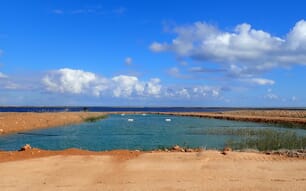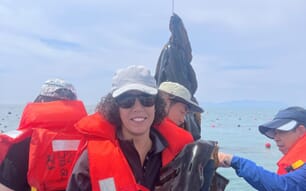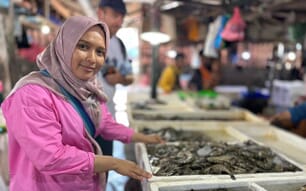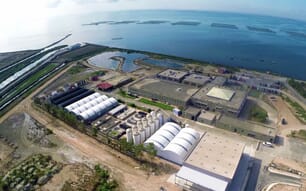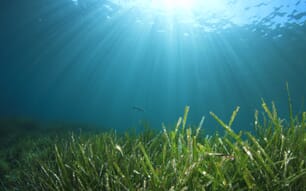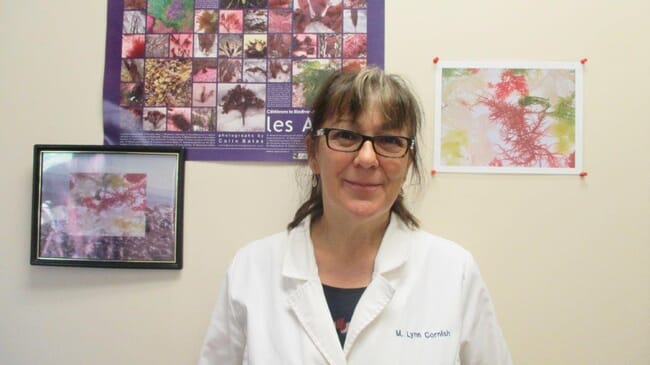
Cornish worked in seaweed cultivation as the seed stock manager for Acadian Seaplants Ltd
Having worked for Acadian Seaplants Limited (ASL), for three decades, she recently accepted a role with SEADLING, a Malaysian biotechnology research company that develops seaweed as a food source for the future of food for a healthy ocean. SEADLING processes dried plants using innovative bio-manufacturing technology, specialising in a species of red seaweed used to make carrageenan derived from seaweed seedlings grown in its hatchery.
Briefly describe your aquaculture career
It began in 1988, when I graduated with a BSc in agricultural soils from the Faculty of Agriculture at Dalhousie University in Nova Scotia, Canada. In the autumn of 1988, Louis Deveau, founder and president of Acadian Seaplants Limited, hired me as quality control manager for his six Irish moss and seaweed meal operations.
This role enabled me to learn all the various facets of quality related to seaweeds and seaweed products. Eventually, I landed on the seaweed cultivation side of the company as seed stock manager. And I was hooked! With a degree in agriculture, growing seaweeds felt like the next exciting frontier, and to be a part of it in the early days of a commercially successful business became a fascinating and addictive activity.
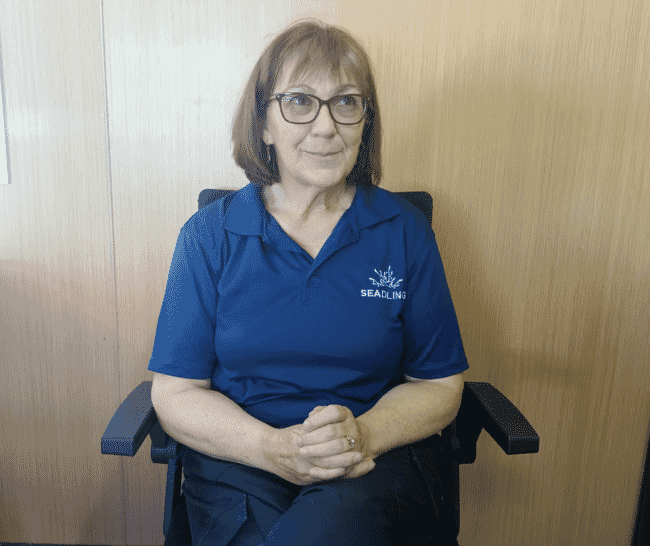
Cornish searches for superior strains of seaweed that are optimised for specific characteristics of interest and quality
Can you give a brief overview of your current role?
My current role at SEADLING revolves around the production of seed stock. I continually search for superior strains of seaweed optimised for specific characteristics of interest and especially quality, such as the carrageenan content. It is commonly known in the seaweed industry that some issues are associated with production of high-quality, epiphyte-free seaweed resources grown by the thousands of small-scale seaweed farmers in tropical regions. Without a doubt, cultures, price fluctuations, value-chain anomalies and politics play vital roles in the industry in countries such as Malaysia, but there are also some fundamental problems associated with the "eucheumatoid seaweed agronomy". By this I mean that decades of monoculture production, the increasingly negative impacts of climate change, disease rates and epiphyte infestations all contributed to a general decline in seaweed productivity in the region.
Excess plastic pollution is another drawback of the industry, and while efforts are underway to improve many of these problems, a lot of work still needs to be done. Here is where my work with SEADLING comes in, and the primary goal is to collaborate with some of the local seaweed farmers and ultimately provide them with good quality, epiphyte-free, reliably productive seeds (based upon seasonality) that may even have some resistance to disease.
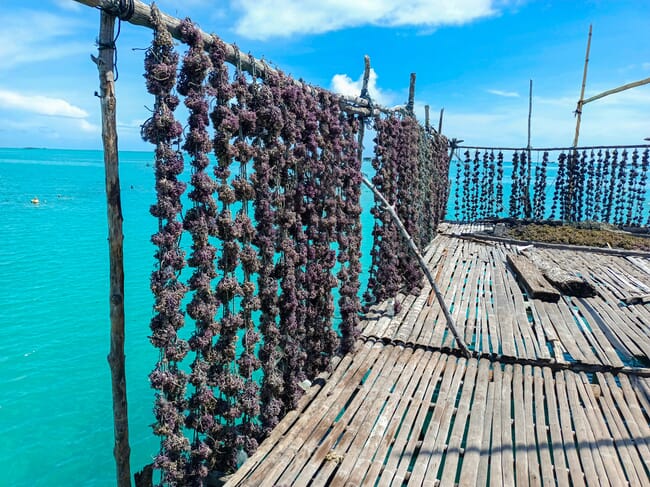
Cornish’s current position includes several visits to seaweed farming sites in the pristine waters of Borneo in the Indonesian region © SEADLING
While it will take some time for me, as a newcomer, to learn all the intricacies of the seaweed industry in Sabah region in the east of Malaysia, I focus on providing the local farmers in the local town of Semporna in the south-eastern coast of Sabah access to high-quality, productive seeds.
How strong is seaweed farming in Canada today?
There appears to be considerable interest and activities taking place on both the east and the west coasts of Canada. More specifically around cultivating seaweeds in the open ocean, but conceivably not at the scale some countries are doing.
What are SEADLING’s sustainability goals, and how do you address them?
I’m relatively new at SEADLING. But one of the reasons I joined the company is because I saw the effort that Simon Davis (managing director of SEADLING) and his team have aimed to minimise the volume of plastics in Malaysian seaweeds. Ultimately, we need healthy oceans, and blue alternatives to plastics must be sourced or created, and of course, they must be affordable and easy to use.
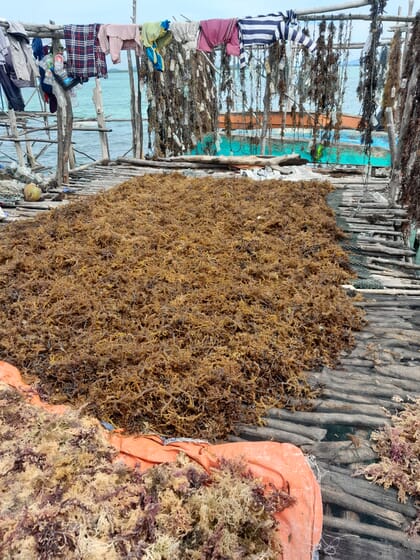
The team at SEADLING are hoping to minimise the volume of plastics in Malaysian seaweeds © SEADLING
SEADLING’s strong belief in the value of seaweeds as a crucial resource that can help provide solutions for a productive and renewable (aquacultured) global food system matches my convictions about these predecessors to land plants. The nutritional value of seaweeds is extensive, and the bioactive components add to their usefulness in human health and wellness applications. However, this area of research is very young (and expensive), but it needs to be accelerated.
I’m willing to help SEADLING bring back value and vitality to coastal communities and improve individual and community livelihoods. Opportunities to empower women within the community will always be explored and carefully considered. Although I acknowledge attaining success will have some challenges, they are not insurmountable.
What does a typical day involve for you?
Nowadays, a typical day for me is very different from what it would have been a few months ago. After spending several weeks in Sabah, meeting my team and some of the farmers and getting an update on the various operations that SEADLING is orchestrating in Malaysia I’m back, at home, in Nova Scotia. I open my laptop as soon as I get up in the morning. I review all the data and respond emails from folks in Sabah. By this time, they have finished their workday, and mine is just beginning. I spend a significant amount of time analysing the data, watching videos of various parts of the operation, writing/editing SOPs [standard operating procedures], planning projects, and all the other things that go along with a job of this nature.
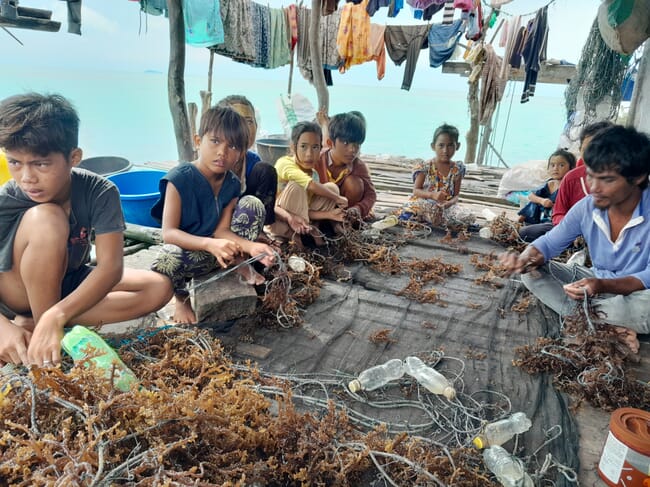
Cornish works remotely in Nova Scotia and checks in with the SEADLING team every day © SEADLING
Then, when my evening rolls around, my teammates in Sabah are gearing up to start their day, and we meet by video-conferencing to discuss any issues and procedures. In a month or two, I’ll return to Borneo to spend a valuable block of time doing some hands-on work and helping to push our programme forward.
Can you tell us a bit about your time working for Acadian Seaplants Limited?
My time at Acadian Seaplants Ltd allowed me to attend St Francis Xavier University, where I obtained an MSc in biology. Both David, and Dr Alan Critchley, my director of research at the time at Acadian, encouraged the writing and publishing of reviews regarding the science of seaweeds to help advance not only the science but also help inform the industry as well. Since then, I have authored and co-authored several scientific publications.
What is the hardest part of your role?
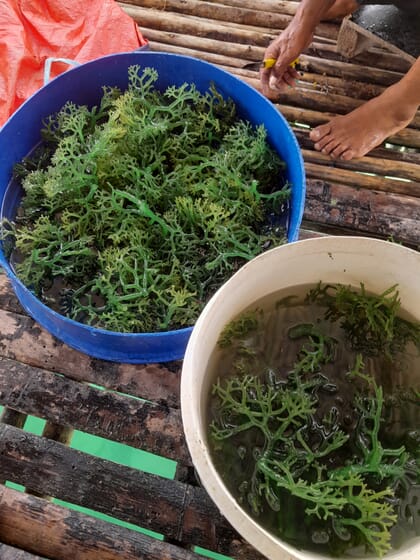
Cultivating new species and strains of seaweed requires careful observation © SEADLING
Not being able physically to look at seaweeds every day is quite challenging! Although the systems work well, there is no substitute for being able to handle those nursery cultures and observe any changes. Are seaweeds healthy? Are they "happy" little seaweeds? I think cultivating new species and strains of anything requires careful observation. Even with a certain level of experience, sometimes your gut feeling is as key as a data table full of numbers.
Have you experienced any gender-related issues in the sector?
I can only think of one quite uncomfortable situation that occurred over 30 years ago, in the early stage of my career. It was meant as a joke, in public, at a male-dominated location. But the sexual context was disturbing to me. Those days were before the MeToo movement, and at that time I pretended to laugh along with the rest of the group. There seems to be a glass ceiling at the senior management level in aquaculture. I know there are a few ladies taking charge in various regions, but many women hired by established companies are assigned softer, more specific jobs related to growing/cultivating, lab work and fundamental research.
What work-related achievement are you most proud of?
After almost 30 years, there are a few achievements I’m proud of, but an important one is related to my ability to figure out how to grow and domesticate seaweed from wild collections. At least two unique populations of seaweed species made it to commercialisation based upon both my efforts to identify appropriate subjects and my experience in learning how to cultivate them.
Are there any notable individuals or companies that have inspired your work?

Cornish wants to share her expertise with small, family-owned seaweed farms in the developing world © SEADLING
My career at ASL provided opportunities to learn a considerable amount about cultivating cold water seaweeds. I’m honoured to have been mentored all these years by Dr Jim Craigie, a most knowledgeable and experienced phycologist in the Halifax branch of the National Research Council of Canada. Understanding the importance of producing quality products and consistently doing it. It takes good science, leadership and dedicated teamwork to innovate and meet constant challenges – these are some of the other things I have learned there. I feel I have been very, very fortunate.
Now I think I’m in a position to give back in a way that can help the small, family-owned seaweed farms in parts of the developing world. I’m hopeful my experience will be beneficial in making that happen. Tropical seaweeds are foreign to me. But learning to grow them is not. Thankfully, the team at SEADLING has been working overtime to educate me. It’s very stimulating!
Do you feel your work could help seaweed cultivation offshore, onshore and even in integrated systems?
Absolutely! Others described me as an evangelical being regarding the merits of seaweeds. My response is that I have good reason to be so enthusiastic about them. At SEADLING, I aim to facilitate the development of good quality, healthy and productive seed stocks for the aquaculture industry in the Indonesian region, and in particular, Malaysia.
-and-al-jeria-abdul-(L).jpg?width=650&height=0)
Cornish notes that there are many similarities to when she first started with her former employer and her initial months with SEADLING © SEADLING
Perhaps a way to look at the broader value of this initiative is to relate it to land-based agriculture. For example, if you were going to plant a field of strawberries, would you use spare plants that your neighbour gives you from his cultivation? Or would you get them from a supplier who has put the research effort into finding a productive strain most suited for your growing conditions produced under optimised conditions for cultivating healthy and robust plants?
What are your ambitions in the sector, and plans for the future development of SEADLING to achieve its full potential?
It's kind of full circle, in a way. When I started work at Acadian Seaplants Limited, seaweeds were grown on land, in tanks, for the carrageenan industry. But, previous investments in Southeast Asia by a handful of large corporations led to the development of the carrageenan industry in that region. And ultimately, the exploitation of cheap labour and the availability of year-round sunshine and warm temperatures put the Canadian source of carrageenophytes out of business. Ownership at Acadian played a role in the development of cultivation initiatives in that area, knowing the potential repercussions for this company.
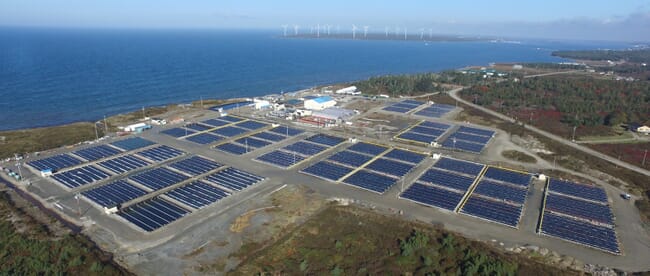
Acadian Seaplants Ltd grows seaweeds on land, in tanks, for the carrageenan industry © Acadian Seaplants
Now, more than 30 years later, I'm very keen to carry the baton and use my depth of cultivation experience at SEADLING to help improve the seaweed industry in Malaysia. It has only been a few months that I've been with SEADLING, and in some ways, there are many similarities to when I first started with my former employer. It's exciting to help a company grow and succeed. There are a lot of work and many challenges for sure. But at the same time extremely stimulating, rewarding, and fun!
What advice would you give to women who are thinking of starting a career in aquaculture?
Collaborate! Make connections wherever and whenever you can but try to offer something in return. Even just a bit of someone's research you read and would like to learn more about. Not everyone will be willing to converse, but many are happy to. Write a research review. If you do a good job you will learn something new. As with most jobs, you have to start somewhere. Don’t spend time worrying about gender equality issues. Be sure you're doing something you love, and – I'll admit – seaweeds are lovable in many ways.

